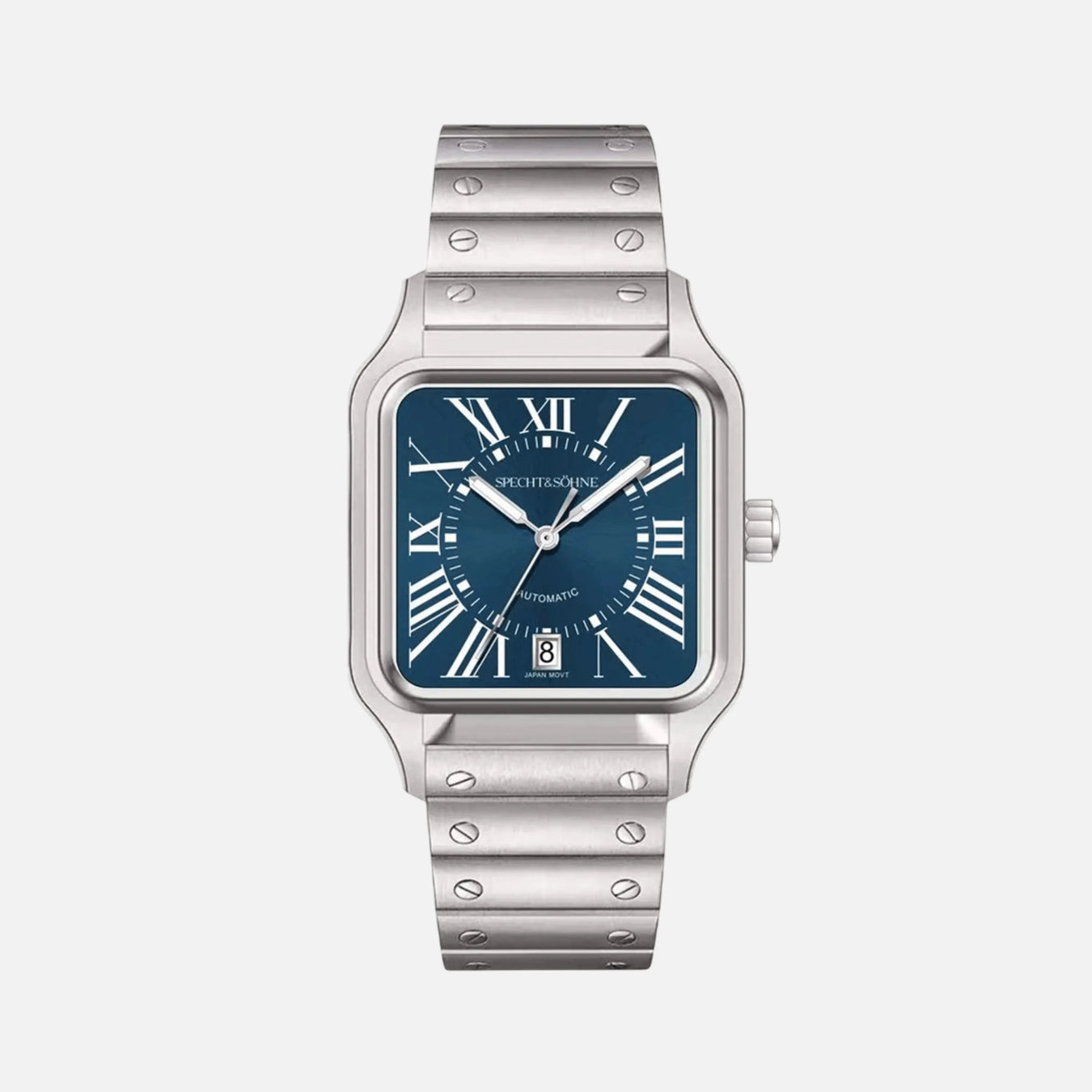
Mastering the Game: A Visual Guide to Popular Chess Openings
Introduction to Chess Openings and Their Importance
The illustrious game of chess, symbolized by its classic battlefield of 64 squares and a set of wooden chess pieces, each meticulously crafted to signify its role in this strategic conquest, commences with a fundamental yet decisive phase known as the opening. These initial moves are the foundation upon which the entire structure of the game is built. A well-executed opening can provide a player with a solid position, control of the center, and pathways to mobilize forces swiftly and effectively.
Chess openings are as diverse and complex as the game itself, with a rich repository of sequences that have been analyzed and refined through centuries of play. Adept players often commit an extensive library of openings to memory, understanding that the right choice can steer the duel in their favor from the very start. These include, but are not limited to:
- The King’s Pawn Opening (e4)
- The Queen’s Pawn Opening (d4)
- The English Opening (c4)
- The Sicilian Defense (e4 c5)
- The French Defense (e4 e6)
- The Ruy Lopez (e4 e5 Nf3 Nc6 Bb5)
Selecting from a set of large wooden chess pieces, luxury chess pieces, or beautifully crafted artisan options may not change the dynamics of the game per se, but it certainly elevates the sensory pleasure of the encounter. These elements serve as the tools through which the art of opening mastery is expressed. Whether it is as a gift for dad or for the aspiring grandmaster, appreciation for the tactile quality of each piece’s movement across the board adds another layer of enjoyment to the cerebral challenge.
It is not merely about moving pieces in a prescribed pattern. Openings are a strategic conversation, a debate waged across the checkered landscape, where each player must anticipate, plan, and execute with precision. Recognizing the importance of openings is the first step to mastering chess, transforming novices into formidable opponents. Understanding the nuances of popular openings ensures that a player is well-equipped to face the myriad of possibilities that this ancient game presents.
The Principles Behind Chess Openings: Setting the Stage for Success
Opening strategies in chess are crucial to gaining an early advantage and setting the right tone for the remainder of the game. Enthusiasts who appreciate the intricacies of the game often invest in a set of large wooden chess pieces, adding a tactile dimension to the strategic planning. Luxury chess pieces are not just ornamental; they represent the hierarchies and potential of each piece in the opening maneuvers.
Control the Center: Chess openings aim to control the center of the board. This allows pieces to exert influence over large areas, facilitating both attack and defense. A set of wooden chess pieces artfully sprawls towards the center squares—e4, d4, e5, d5—as one unfolds the game plan.
Develop your pieces: Development refers to moving the chess pieces from their starting positions to more effective squares. Each piece’s power is maximized when it is well-positioned. Beautiful chess pieces glide across the board, from knights leaping into action to bishops slicing through diagonals, portraying this principle visually.
King Safety: One of the primary objectives is to ensure the king’s safety, often achieved through castling. Especially in a visual guide, the contrast between the king tucked behind a bastion of pawns and a vulnerable, central position emphasizes the importance of this tactic.
Manage Time and Tempo: Efficient use of time and control over tempo are key considerations. Unnecessary moves with the same piece or delayed development can result in lost tempo and opportunities. A luxury set can serve as a gift for dad or any player looking to improve their visual and tactical appreciation of temporal concepts in chess.
By internalizing these principles and visualizing them with a high-quality chess set, players set the groundwork for successful strategies, opening the door to the subtle battle of wit and will that chess embodies.
Dissecting the King’s Pawn Opening: e4 Strategies and Responses
The King’s Pawn Opening, characterized by the move 1.e4, is one of the most highly regarded and frequently played openings in chess. It is a move akin to art 809125, unveiling a set of wooden chess pieces on the board with an array of strategic possibilities. Grandmasters and amateurs alike appreciate this opening for its direct approach to the center and the swift development it affords.
- Players fond of aggression may leverage the King’s Pawn Opening to take command of the center quickly.
- Defenders often counter with moves like 1…c5, initiating the Sicilian Defense, which disrupts white’s plans while gaining a foothold in the center.
- The French Defense, signaled by 1…e6, offers a solid structure that can later challenge white’s central e4 pawn.
- Alternately, 1…e5 symmetrical response equates to embracing the Open Game, leading to well-trodden paths like the Ruy López or Italian Game.
Players who own a set of large wooden chess pieces may notice how the luxury chess pieces glide across the board as complex strategies unfold from the simple e4 start.
Responses to e4 encompass a wide range of structures; aggressive gamers might opt for the double-edged Scandinavian Defense with 1…d5, immediately challenging white’s pawn.
The Caro-Kann Defense, beginning with 1…c6, is designed to provide black with a solid, albeit somewhat passive, posture. Intricate battle plans emanate from these positions, much like a masterpiece befitting a connoisseur’s collection or a beautiful chess piece gift for dad cherished for its depth and sophistication.
In summary, the King’s Pawn Opening holds the promise of dynamic play. Each response requires diligent study and understanding to both execute and counter effectively.
Exploring the Queen’s Pawn Opening: d4 and Its Many Complexities
The Queen’s Pawn Opening, characterized by the move 1.d4, is a cornerstone in the grand edifice of chess strategy. It boasts an illustrious history, being favored by world champions and amateur enthusiasts alike. When a player pushes the d4 pawn, they embark on a complex journey with a wealth of strategic and tactical possibilities that can unfold into numerous renowned defenses.
This opening lays the groundwork for control of the center, as the d4 square influences both the central and queen-side territories. Moreover, this initial advance typically heralds the development of bishops and knights towards harmonious interaction and exerts pressure on the opponent’s e5 square, a crucial battleground in the center of the board.
A major branch following 1.d4 is the Queen’s Gambit, further divided into classic defense systems such as the Slav, King’s Indian Defense, Nimzo-Indian, and the Grünfeld, each with its own set of principled responses and ideas. Players often employ a strategic blend of a set of wooden chess pieces, sometimes resembling art pieces like those part of the collection number 809125, moving rhythmically in a battle of positioning and adaptation.
Those who select large wooden chess pieces understand the tactile and psychological advantages of playing with luxury chess pieces. These beautiful chess pieces not only provide aesthetic pleasure but also contribute to the gravitas of the strategies employed on the board. They make an excellent gift for dad or any chess aficionado passionate about the game.
The depths of the Queen’s Pawn Opening are fathomless, housing a variety of positional and dynamic play styles. It’s a conversation in chess language that commences subtle yet can escalate quickly into sharp lines, requiring a comprehensive understanding of underlying strategic themes. Each move can unfurl into a blossoming complexity, demanding vigilance, precision, and a profound familiarity with the opening’s intricacies.
The Nimzo-Indian Defense: A Study of Flexibility and Control
The Nimzo-Indian Defense, characterized by the moves 1.d4 Nf6 2.c4 e6 3.Nc3 Bb4, is one of the most respected and intricate openings in the realm of chess. It epitomizes a battle for control right from the onset, allowing players to exert influence over the critical e4-square. This opening is named after the legendary grandmaster Aron Nimzowitsch, who revolutionized the understanding of positional play.
At its heart, the Nimzo-Indian is a hypermodern opening that relies on control of the center with pieces rather than pawns. This approach is manifest in the pressure applied by the bishop on the knight at c3, which can be a key defender of the center. Remarkably, this opening blends a combination of piece activity and pawn structure flexibility, enabling practitioners to adapt to a wide range of middle-game scenarios.
Key strategies within the Nimzo-Indian Defense include:
- Quick development of the light-squared bishop before e6 and b6 pawn moves block its diagonal.
- Flexible pawn structures that can adapt to various central formations dictated by White.
- Control and potential double pawn infliction on the c-file, often impeding White’s smooth mobilization of forces.
- Potential for complex tactical skirmishes and rich positional battles, particularly in the e4 and d5 squares.
Players who master the cognitive ballet of the Nimzo-Indian often illustrate an aptitude for strategic depth and an appreciation for finely carved positional advantages. With its beautiful chess pieces maneuvering tactically, the Nimzo-Indian can be a thoughtful gift for a dad or any enthusiast who appreciates the artistic depth of chess. Whether employing a set of large wooden chess pieces or luxury chess sets, aficionados can recognize the Nimzo-Indian Defense as a masterpiece of flexibility and control in their chess repertoire.
Dominating with the Sicilian Defense: Unpacking the Most Popular Response to e4
The Sicilian Defense represents a battlefield where the clashing of a set of wooden chess pieces art 809125 not only echoes the strategic depth of chess but also the sophisticated dance of aggression and control. This opening emerges after White begins with 1.e4, and Black counters with 1…c5, immediately vying for central control and unbalance. The Sicilian is a favorite among aggressive players who favor complex positions and deep tactical play.
Predominantly, the Sicilian branches into several variations, each with its strategic themes and ideas. Highly regarded lines include the Najdorf, Accelerated Dragon, and Scheveningen, to name a few. These systems are like a set of large wooden chess pieces—luxury chess pieces that display both the beauty and intricacy of the game.
When a player chooses the Sicilian, they often aim to:
- Control the d4 square, challenging White’s grasp of the center.
- Develop rapidly, with the potential to initiate a kingside attack.
- Create an asymmetrical pawn structure, offering dynamic and imbalanced play which can lead to a middle-game advantage.
Gifted to the chess community as a weapon for Black, the Sicilian Defense is synonymous with a gift for dad, that is, a cherished legacy passed on to future chess enthusiasts. Its frequent use in all levels of play speaks to its effectiveness and the rich gameplay it provides.
In modern chess theory, the Sicilian Defense remains a formidable choice for Black, often leading to exciting and decisive results. It enables players to dictate the pace of battle, transitioning from a serene set of opening moves to a storm of tactical possibilities and strategic depth. Understanding the nuances of this opening can empower players to command the board and outwit their opponents in the challenging dance of chess warfare.
The French Defense: Building a Strong Fortress While Counterattacking
The French Defense stands as a testament to strategic depth and resilience in chess opening repertoires. It begins with the moves 1. e4 e6, signaling a intent to construct a robust defense while also preparing groundwork for a potent counterattack. This opening is perfect for players who possess a penchant for intricate positional play and are in search of an enduring strategy.
Employing the French Defense can liken the black pieces to a set of large wooden chess pieces; they exude grandeur and exhibit formidable defensive capabilities. The opening typically leads to a complex and closed center, which allows the second player to mobilize forces without immediate confrontations. The pawn chain formed by black, often extending from d5 to e6 and sometimes reinforced by f7, serves as both a shield and a springboard for offensive operations.
Key elements of mastering the French Defense include:
- Understanding the importance of the c5 pawn thrust, which challenges white’s central dominance and can serve as a lever for black’s active play.
- Familiarity with the Bishop on c8, often a problematic piece in this defense, which requires careful maneuvering or timely exchange to become an effective part of black’s game plan.
- Ability to navigate through the intricacies of various pawn structures that arise, each leading to different types of middle game strategies and plans.
For players assembling their chess opening arsenal, much like amassing a set of luxury chess pieces, the French Defense offers a blend of solidity and dynamism. As a beautiful chess piece serves both an aesthetic and practical purpose, so does the French Defense serve the dual role of fortifying the position while creating avenues for vigorous play. It can indeed be the ‘gift for dad’ in a metaphorical sense, presenting the gift of a reliable opening that can be passed down and taught to future generations of players.
In conclusion, the French Defense provides players with a consistent yet flexible opening. With proper understanding and practice, it promises to advance one’s game, building a fortress of pawns and pieces, while retaining the sharp edge needed for counterattacking opportunities.
The Ruy Lopez: Insights into the Spanish Game
The Ruy Lopez, also known as the Spanish Game, is a classical chess opening that has been studied for centuries. Emerging from a set of wooden chess pieces on the board, this opening begins with the moves 1.e4 e5 2.Nf3 Nc6 3.Bb5. The white pieces aim to exert control over the central squares while targeting the knight on c6, which supports the e5 pawn.
At the heart of the Ruy Lopez is the interplay between strategic concepts and tactical opportunities. It is a favorite among chess aficionados looking to play a game full of rich positional ideas and potential for complex middlegame plans. The opening is versatile, offering a wealth of variations suitable for players of all styles, ranging from the slow build-up of the Closed Ruy Lopez to the more immediate clashes in the Open Ruy Lopez.
Key considerations in the Spanish Game include:
- Pawn Structure: Understanding the central pawn formations is essential. Players often aim for the d4 advance, which can lead to a superior pawn center if uncontested.
- Piece Activity: Placement of the pieces, particularly the bishops and knights, directly influences the strategic battleground. White’s light-squared bishop on b5 is a pivotal piece, often provoking weaknesses in Black’s pawn structure.
- King Safety: Castling kingside is common, but both players must be wary of attacks along the semi-open f- and g-files. Maneuvering a knight to the f5 square can be a strong offensive tactic for black.
For enthusiasts seeking a gift for dad or a touch of opulence, a set of large wooden chess pieces or luxury chess pieces can truly enhance the experience of exploring the Ruy Lopez. These beautiful chess pieces not only serve as functional tools for this strategic battle but also add an element of grandeur to the learning process. Whether the chess pieces are large or smaller, adept players value the aesthetic appeal of well-crafted chess sets, recognizing that the beauty of chess extends beyond the mental challenge and into the physical craftsmanship of the game’s most fundamental components. The Spanish Game, adorned with such pieces, transforms into a visual and intellectual delight.
Chess Opening Tactics: Recognizing Patterns and Traps
In the nuanced battlefield of a chessboard, opening tactics are fundamental for setting the tone of the game. Astute players understand that a set of wooden chess pieces (art 809125) is more than just an aesthetic choice; it’s a collection of potential strategies and deceptions waiting to unfurl. Recognizing patterns and traps early on can give players a significant advantage.
Chess patterns are like a secret language that pieces whisper across the board. Opening tactics often involve setting up positions that are known to be advantageous. For instance, ‘The Fork’ involves placing a piece—such as a knight or a pawn—in a position where it can attack two or more of the opponent’s pieces simultaneously. Observing the patterns your opponent favors can provide clues as to what traps they might be setting.
Traps, on the other hand, are strategic moves designed to lure an opponent into making a mistake. A common example is ‘The Scholar’s Mate’, a four-move checkmate that primarily targets beginner players. However, there are more sophisticated traps in various openings that even experienced players might miss if they’re not vigilant.
Players who invest in a set of large wooden chess pieces often do so not just for the tactile joy but to have clearly distinguishable pieces for better pattern recognition. Luxury chess pieces can be especially beneficial as their unique characteristics make it easier to remember certain positions or avoid potential traps.
As a beautiful chess set often becomes a gift for dad or any chess enthusiast, it’s a symbolic representation of the strategic depth and creativity that chess offers. Learning to discern these opening tactics is akin to gifting oneself an advantage on the chessboard – one that could lead to an early victory or a stunning comeback.
Positional Play Post-Opening: Transitioning to the Middlegame
Once the opening phase is complete, players must adeptly transition into the middlegame, where the board’s dynamics considerably shift. The array of attacks and defenses expands as each player endeavors to leverage their position while anticipating the opponent’s strategy.
- Establish Strongholds: Players should fortify their positions by securing key squares with pawns and aligning their pieces for both defense and attack. The positioning of a set of wooden chess pieces, artfully placed, can represent an impenetrable defense or a setup for a strategic assault.
- Connect Rooks: The rooks, often starting the game dormant, come to life in the middlegame. Ensuring they are connected and placed on open or soon-to-be-open files can apply pressure and dominate the board.
- Piece Mobility: In the transition to the middlegame, the ability of pieces to move freely around the board is paramount. A set of large wooden chess pieces often highlights the significance of controlling space, as the beautiful chess pieces glide across the board, creating threats and carving out territory.
- Pawn Structure: A solid pawn structure is the backbone of any good strategy. Players must avoid weaknesses, such as isolated or doubled pawns, and aim to create pawn chains that support each other and control central squares.
- King Safety: Even as the game shifts focus to offense, the importance of king safety remains. Players must be vigilant, ensuring their monarch is protected, often by a subtle rearrangement of pawns or a well-positioned piece, akin to the luxury chess pieces in a fine set.
- Plan Development: A coherent plan is the engine of any successful middlegame. Players must adapt their strategies based on the evolving board dynamics, considering attacks, counterattacks, and potential endgame transitions.
A thoughtful approach to positional play post-opening sets the stage for an effective middlegame strategy. Players who excel in this transition often find themselves with an advantage as they move toward the decisive stages of the game, be it through incremental pressure or a strike that resembles a gift for dad—an unexpected yet gratifying victory set in motion by superior positioning.
Innovative Openings: A Look at Modern Chess Developments
The landscape of chess has undergone a revolution, driven by a blend of human ingenuity and computational power. In recent years, the advent of robust chess engines and databases has redefined opening preparation and strategy, leading to the evolution of time-tested openings and the birth of radical, unorthodox gambits.
AlphaZero’s Influence: Google DeepMind’s AlphaZero, through self-learning algorithms, introduced novel strategies in mainstream openings. AlphaZero’s preference for rapid pawn moves and piece activity inspired a wave of new opening experiments, even at elite levels.
Computational Refinement: Ongoing analysis by engines like Stockfish and Leela Chess Zero continually refines existing theory. New moves and plans are found in the deepest lines, offering alternatives to standard ideas, making even the most well-trodden paths ripe for innovation.
Rare Openings Gain Foothold: Openings once considered dubious have gained legitimacy due to both engine validation and surprise value. Moves like the Bongcloud or once-sidelined defenses like the Snake Benoni demonstrate the shift towards a broader exploration of opening possibilities.
Databases and Preparation: With expansive databases at their disposal, players now exhaustively research even minor variations. This has led to a vast expansion of available opening knowledge, enabling players to press for advantages right out of the gate.
Crossover from Online Chess: The rise of online chess has fostered openness to risk-taking and creativity. Rapid and Blitz formats online have spawned openings that prioritize imbalance and dynamism, often translating to over-the-board play.
In the context of luxury chess, this transformative era offers aficionados an opportunity to not only enjoy the tactile beauty of a set of large wooden chess pieces but to also engage with the vibrant intellectual developments of the game. As a gift for dad or a savvy player, a set of beautiful chess pieces like those in art 809125 can serve as a totem of both classical tradition and the unfolding future of chess strategy.
Practicing Chess Openings: Tools and Resources for Improvement
For chess enthusiasts aiming to refine their tactical prowess, diving deep into chess openings is a fundamental step. Embarking on this journey, players are often accompanied by a set of wooden chess pieces art 809125, which serve as both tools for study and items of aesthetic appreciation. Those looking for a more luxurious touch might opt for a set of large wooden chess pieces, elevating the tactile experience of each move.
To further advance one’s opening repertoire, various resources are at disposal:
- Chess Learning Software: Programs like ChessBase and Houdini offer in-depth analyses of games, helping players understand the nuances of popular openings.
- Online Chess Platforms: Websites such as Chess.com and Lichess provide an endless stream of opponents around the clock, aiding in applying theoretical knowledge in practical games.
- Opening Encyclopedias: Books and digital encyclopedias catalog a wide array of opening variations, offering insights on historical games and modern trends.
- Chess Coaches and Clubs: Personal guidance from a seasoned coach or joining a local chess club can offer tailored strategies in openings, suited to an individual’s playing style.
- Tactic Puzzles: Regularly solving puzzles that emphasize opening principles reinforces pattern recognition under different scenarios.
- Luxury Chess Sets: For those who take pride in their equipment, beautiful chess pieces or luxury chess sets can be not just a gift for dad but also an inspiration for further practice and improvement.
- Instructional Videos: A multitude of grandmasters and educators share their expertise in video format, providing visual and auditory learning opportunities.
Leveraging these tools and resources allows players to build a robust foundation in chess openings, setting the stage for a strong middle game and an assured path to victory.
Conclusion: Integrating Knowledge of Openings into Your Overall Chess Strategy
Success in chess is not merely a consequence of memorizing a set of wooden chess pieces’ artful maneuvers; it demands intricate strategizing and adaptability. Knowledge of popular chess openings serves as the foundation upon which players can establish control and transition seamlessly into the middle game. Understanding these openings equips players with a toolkit of patterns, enabling them to anticipate opponents’ moves and counteract effectively.
To integrate opening knowledge into one’s overall strategy, players must first recognize the opening principles: control the center, develop your pieces, and ensure the safety of your king, usually by castling. These are applicable regardless of the specific opening played. Once these principles are ingrained, the focus can shift to studying specific openings, which often dovetail neatly into preferred middle-game strategies.
It is vital to select openings that align with one’s playing style. A player drawn to aggressive play might favor the King’s Gambit, while a defensive player may opt for the solid Caro-Kann Defense. The extensive study of chosen openings will ingratiates their patterns into a player’s repertoire, enabling a fluid, intuitive decision-making process as the game unfolds.
Players should also be cognizant of the balance between a set of large wooden chess pieces and their function on the board. The luxury chess pieces entrusted to the player must be coordinated efficiently to establish a presence across the board, creating a harmonious unit rather than scattered individual pieces.
Moreover, consider that openings are a gift for dad and other mentors—it’s not just about personal mastery, but about sharing knowledge and fostering growth in others’ strategies as well.
Ultimately, the depth of opening knowledge significantly influences overall game play, and when combined with a fine-tuned strategy, positions a player at a vantage point from the opening moves to the checkmate.






